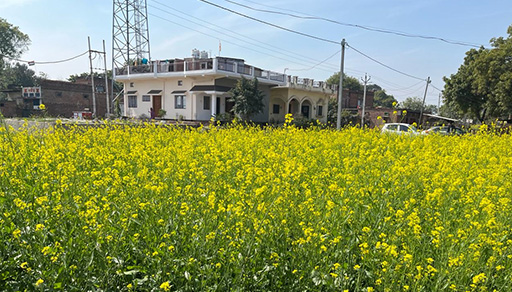
Today, 70% of our country is identified as a village or is of a rural construct, yet most of us don't get the opportunity or time to visit them. Holidays and work take us only to locations which are well connected and catered to, and our idea of a village is formed from what we see in media or what we hear from our parents and grandparents.
I am fortunate that my job takes me to villages in India and some of the questions which friends and colleagues ask me are - Are our villages still the same? Has there been any progress?
In my view, Indian villages are no longer about rickety roads, poor sanitation and ignorance. Today, connectivity, access to information, financial Inclusion, government benefits etc. have transformed our villages and the aspirations of our villagers. Financial Inclusion has specifically given women in rural India, the valuable access to credit, helping them fulfilling their entrepreneurial ambitions and becoming more active members of the community.
The ‘Pillar' which now needs to be strengthened and focused on is Financial literacy – How do they use the funds that they have access to? how do they protect their identity? what should they do not to fall into the debt trap? are the few questions that they should be able to address. Our folks in rural India will also benefit with learnings about other facets of Financial Inclusion, especially Retirement planning. Old age is a reality for everyone and having a sustainable income for our old age is very important. Some thoughts on which are as follows
- 1. Micro savings – In Africa, there is a concept of Pygmy Deposits wherein the daily or weekly wage earners can save small amounts from their wages on a regular basis to build up a retirement corpus. In India, we have Recurring Deposits where one can save on a monthly basis. Financial institutions can look at bridging this gap, where there need not be any fixed frequency but make micro deposits as and an when they have some amount to spare. This can be built up as a habit that the depositor can enjoy.
- 2. Micro investments – It is possible to make systematic investment plans (SIPs) for as low as Rs 100 in mutual funds and trusted financial institutions can start distributing these products, especially where the risk elements are very low like the blue-chip funds or even debt funds. To socialize this, fund houses or distributors may consider creating some literature in local languages and with more visual representations on the benefit of such investments, encouraging active participation from the target audience.
- 3. Sovereign Gold Bonds – This could be another safe avenue for the long-term wherein physical gold need not be bought. The obvious benefits of security of such funds and nominal annual returns make them a worthwhile investment that can be started with small amounts.
The changing economic landscape of the country ably enabled through mobile technology can bridge the geographical gap, providing rural India with convenient and secure access to financial services but in order to increase the penetration we, as responsible lenders, need to play an important role in educating our customers.
Sharoni Pal
(Ms. Pal is the Head of Central Operations, Arohan Financial Services Limited, an Aavishkaar Group company – views expressed above are personal).


